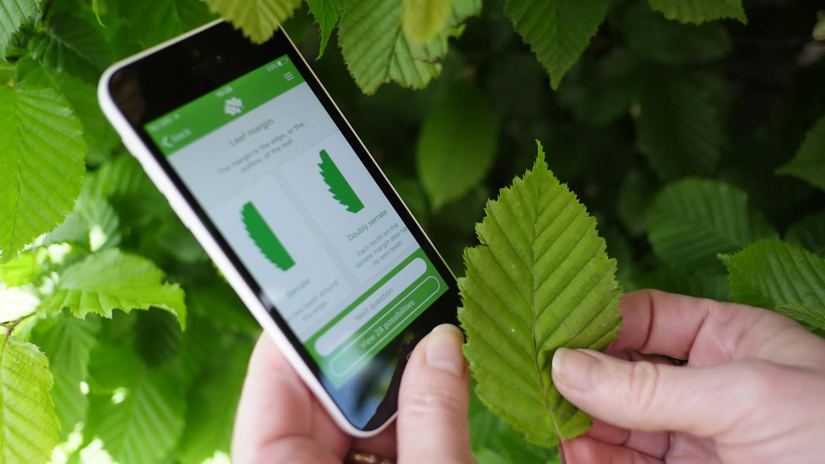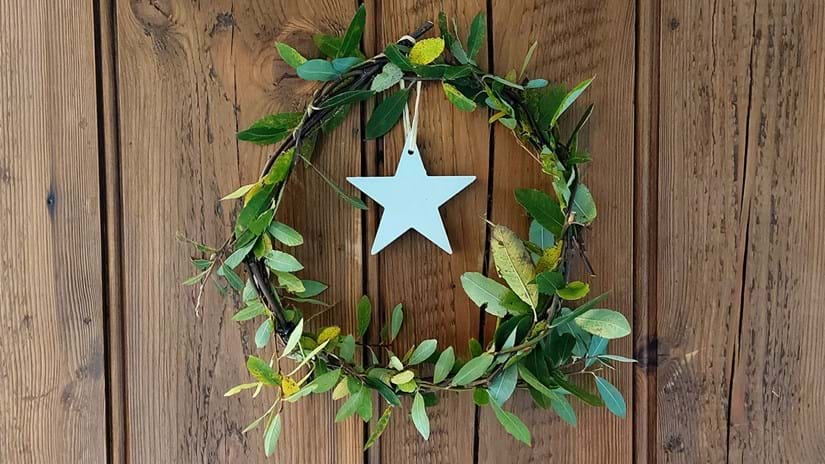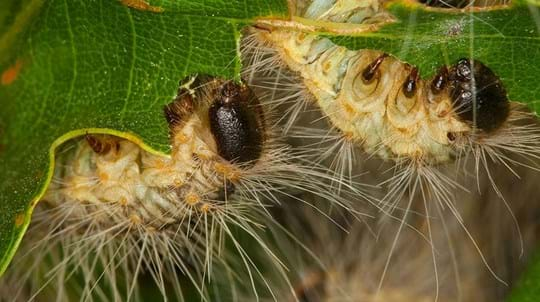
Credit: Nature Photographers Ltd / WTML
Leaves
The fresh green, oval leaves are 6cm long, have smooth sides and characteristic curving veins. They fade to a rich crimson colour before falling in autumn.
Understated until the colder months when it bursts into colour, dogwood is a broadleaf shrub which thrives in damp woodland edges. The timber is so hard, it was used for crucifixes.
Common name: dogwood
Scientific name: Cornus sanguinea
Family: Cornaceae
Origin: native
Dogwood is a small broadleaf shrub, typically found growing along woodland edges and in hedgerows of southern England. Mature trees can grow to 10m. The bark is grey and smooth with shallow ridges which develop with age, and its twigs are smooth, straight and slim. Leaf buds are black and look like bristles, forming on short stalks.
Look out for: a stringy latex-type substance which can be seen if the leaves are pulled apart. The four-petalled flowers have a bad smell.
Identified in winter by: newer twigs which are bright red.

Credit: Nature Photographers Ltd / WTML
The fresh green, oval leaves are 6cm long, have smooth sides and characteristic curving veins. They fade to a rich crimson colour before falling in autumn.

Credit: Frank Teigler Hippocampus Bildarchiv / Alamy Stock Photo
Dogwood is hermaphrodite, meaning the male and female reproductive parts are contained within the same flower. The flowers are small with four creamy white petals, and are produced in clusters.

Credit: Blickwinkel / Alamy Stock Photo
After pollination by insects, the flowers develop into small black berries – sometimes called 'dogberries'.

Download our free Tree ID app for Android and iPhone to identify the UK's native and non-native trees. It's an A-Z tree guide in your pocket.
Download the appDogwood is native throughout Europe, Asia and North America. It is able to grow in damp conditions but can grow in many soil types. In the UK it can be seen growing wild along woodland edges and hedgerows. It is also a popular ornamental plant and is used in gardens to provide autumn and winter colour.

Credit: Nigel Bean / naturepl.com
The leaves are eaten by the caterpillars of some moths, including the case-bearer moth, while the flowers are visited by insects and the berries are eaten by many mammals and birds.
In the sun the twigs are coloured crimson, but lime green in the shade.
The wood of the dogwood tree is one of the hardest and it is said that it was chosen to make the cross on which Jesus Christ was crucified.
The origin of the name comes from the smooth, straight twigs which were used to make butchers’ skewers. Skewers used to be called 'dags' or 'dogs', so the name means 'skewer wood'.

Credit: Tim Gainey / Alamy Stock Photo
The bark of all Cornus species are rich in tannins and have been used in traditional medicine as a substitute for quinine - a drug that’s used to treat malaria and babesiosis. A drink similar to tea can be made from the bark to treat pain and fevers, while the leaves can be made into a poultice to cover wounds. Dogwood is a popular garden plant and many horticultural varieties have been bred.

Helen Keating • 05 Dec 2022
Transform your home into a woodland wonderland this Christmas with our easy ideas for festive, foraged home decor.
Be inspiredDogwood can be susceptible to horse-chestnut scale insect – a sap-sucking, limpet-like insect which feeds on a wide range of trees and shrubs. The damage is mainly aesthetic and does little harm to the shrub.

Shop
We have single trees and tree packs to meet your needs, from wildlife to woodfuel. Delivery is free.
External link

Trees woods and wildlife
Learn more about the pests and diseases threatening our trees. Find out how to spot them, the symptoms and outlook, and how you can help.